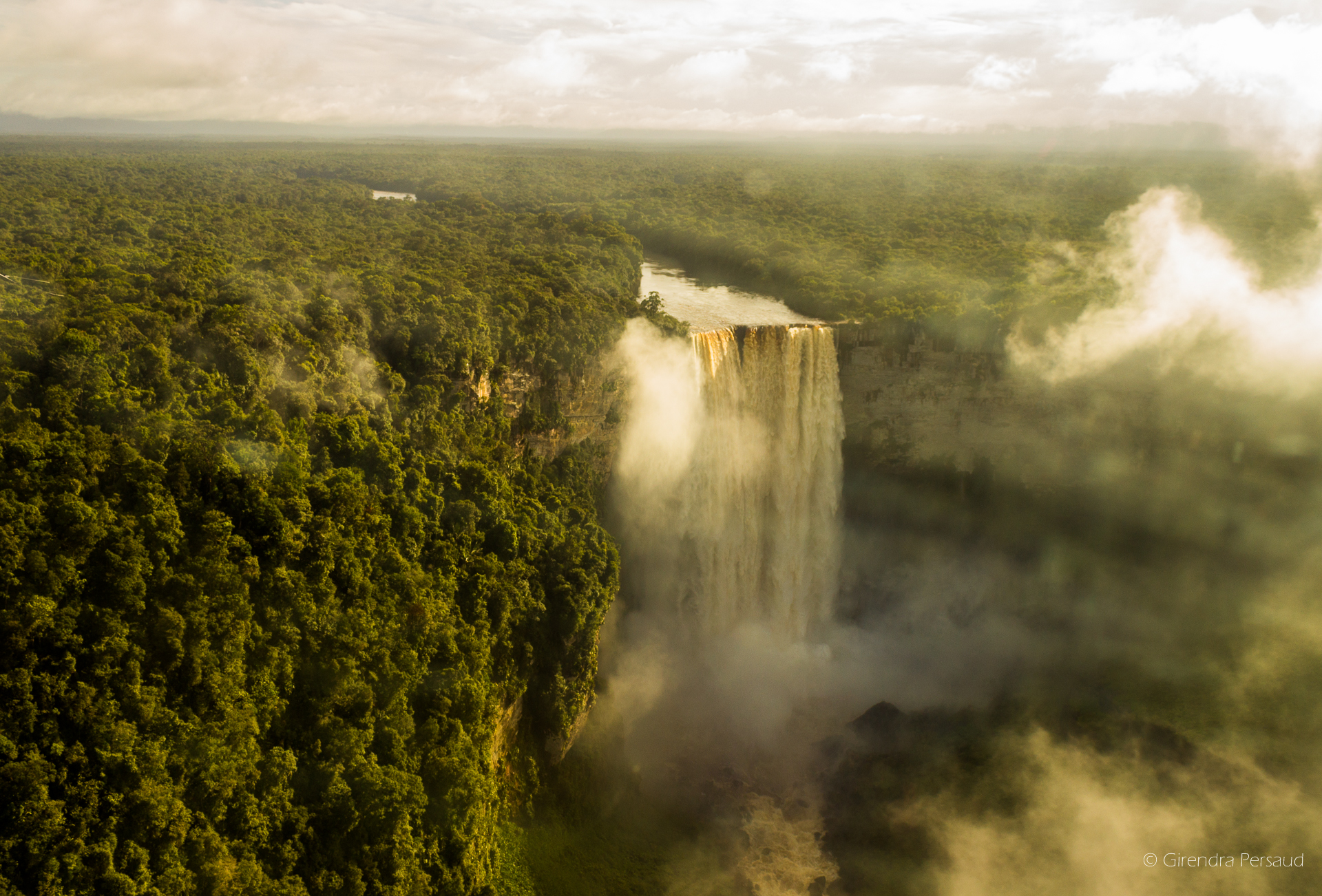Kaieteur Falls is the world’s [largest by volume flow and height combination] single drop waterfall, located on the Potaro River in the Kaieteur National Park, in Essequibo, Guyana. Its location is in the Amazon forest. It is 226 metres (741 ft) high when measured from its plunge over a sandstone and conglomerate cliff to the first break. It then flows over a series of steep cascades that, when included in the measurements, bring the total height to 251 metres (822 ft). While many falls have greater height, few have the combination of height and water volume, and Kaieteur is among the most powerful waterfalls in the world with an average flow rate of 663 cubic metres per second (23,400 cubic feet per second).
Kaieteur Falls is about four times higher than the Niagara Falls, on the border between Canada and the United States, and about twice the height of the Victoria Falls, on the border of Zambia and Zimbabwe in Africa. It is a single drop waterfall.
Upriver from the falls, the Potaro Plateau stretches out to the distant escarpment of the Pakaraima Mountains. The Potaro River empties into the Essequibo River which is one of the longest and widest rivers in South America and the longest river in Guyana.
On April 24, 1870 Charles Barrington Brown, one of two British geologists appointed government surveyors to the colony of British Guiana (now known as Guyana), became the first European to see Kaieteur Falls. The other surveyor was James Sawkins. Brown and James Sawkins arrived in Georgetown in 1867 and did some of their mapping and preparation of geological reports together, some in separate expeditions, but Sawkins had taken a break from his work when Brown came upon Kaieteur.
At the time of discovery Brown did not have time to investigate Kaieteur Falls closer and he returned here one year later when measurements of the waterfall were made.
Brown’s book Canoe and Camp life in British Guiana was published in 1876. Two years later, in 1878, he published Fifteen Thousand Miles on the Amazon and its tributaries.
According to a Patamona Indian legend, Kaieteur Falls was named for Kai, a chief, or Toshao who acted to save his people by paddling over the falls in an act of self-sacrifice to Makonaima, the great spirit.
Another legend though was told to Brown by Amerindians in the night of discovery of falls: Kaieteur has been named after an unpleasant old man who was placed in a boat and shoved in the fall by his relatives. Thus the fall was named “Kaieteur” what means – “old-man-fall”.
Source: https://en.wikipedia.org/wiki/Kaieteur_Falls, July, 2016







